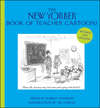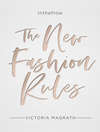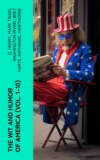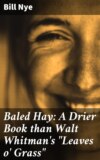Kitabı oku: «Comic History of England», sayfa 6
CHAPTER XV.
MORE SANGUINARY TRIUMPHS: ONWARD MARCH OF CIVILIZATION GRAPHICALLY DELINEATED WITH THE HISTORIAN'S USUAL COMPLETENESS
The Plantagenet period saw the establishment of the House of Commons, and cut off the power of the king to levy taxes without the consent of Parliament. It also exchanged the judicial rough-and-tumble on horseback for the trial by jury. Serfdom continued, and a good horse would bring more in market than a man.
Agriculture was still in its infancy, and the farmer refused to adopt a new and attractive plough because it did not permit the ploughman to walk near enough to his team, that he might twist the tail of the patient bullock.
The costumes of the period seem odd, as we look back upon them, for the men wore pointed shoes with toes tied to the girdle, and trousers and coat each of different colors: for instance, sometimes one sleeve was black and the other white, while the ladies wore tall hats, sometimes two feet high, and long trains. They also carried two swords in the girdle, doubtless to protect them from the nobility.
[Illustration: SLAVES WERE BOUGHT AND SOLD AT THE FAIRS.]
Each house of any size had a "pleasance," and the "herberie," or physic garden, which was the pioneer of the pie-plant bed, was connected with the monasteries.
[Illustration: ASTROLOGY WAS THE FAVORITE STUDY OF THOSE TIMES.]
Roger Bacon was thrown into prison for having too good an education. Scientists in those days always ran the risk of being surprised, and more than one discoverer wound up by discovering himself in jail.
Astrology was a favorite amusement, especially among the young people.
Henry IV., son of John of Gaunt, fourth son of Edward III., became king in 1399, though Edmund Mortimer, Earl of March, and great-grandson of Lionel, the third son of Edward III., was the rightful heir. This boy was detained in Windsor Castle by Henry's orders.
[Illustration: HENRY PROTECTS THE CHURCH FROM HERESY.]
Henry succeeded in catching a heretic, in 1401, and burned him at the stake. This was the first person put to death in England for his religious belief, and the occasion was the origin of the epitaph, "Well done, good and faithful servant."
Conspiracies were quite common in those days, one of them being organized by Harry Percy, called "Hotspur" because of his irritability. The ballad of Chevy Chase was founded upon his exploits at the battle of Otterburn, in 1388. The Percys favored Mortimer, and so united with the Welsh and Scots.
A large fight occurred at Shrewsbury in 1403. The rebels were defeated and Percy slain. Northumberland was pardoned, and tried it again, assisted by the Archbishop of York, two years later. The archbishop was executed in 1405. Northumberland made another effort, but was defeated and slain.
In 1413 Henry died, leaving behind him the record of a fraudulent sovereign who was parsimonious, sour, and superstitious, without virtue or religion.
He was succeeded by his successor, which was customary at that time. Henry V. was his son, a youth who was wild and reckless. He had been in jail for insulting the chief-justice, as a result of a drunken frolic and fine. He was real wild and bad, and had no more respect for his ancestry than a chicken born in an incubator. Yet he reformed on taking the throne.
[Illustration: HENRY V. HAD ON ONE OCCASION BEEN COMMITTED TO PRISON.]
Henry now went over to France with a view to securing the throne, but did not get it, as it was occupied at the time. So he returned; but at Agincourt was surprised by the French army, four times as large as his own, and with a loss of forty only, he slew ten thousand of the French and captured fourteen thousand. What the French were doing while this slaughter was going on the modern historian has great difficulty in figuring out. This battle occurred in 1415, and two years after Henry returned to France, hoping to do equally well. He made a treaty at Troyes with the celebrated idiot Charles VI., and promised to marry his daughter Catherine, who was to succeed Charles upon his death, and try to do better. Henry became Regent of France by this ruse, but died in 1422, and left his son Henry, less than a year old. The king's death was a sad blow to England, for he was an improvement on the general run of kings. Henry V. left a brother, the Duke of Bedford, who became Protector and Regent of France; but when Charles the Imbecile died, his son, Charles VII., rose to the occasion, and a war of some years began. After some time, Bedford invaded southern France and besieged Orléans.
[Illustration: HENRY, PROCLAIMED REGENT OF FRANCE, ENTERED PARIS IN TRIUMPH.]
Joan of Arc had been told of a prophecy to the effect that France could only be delivered from the English by a virgin, and so she, though only a peasant girl, yet full of a strange, eager heroism which was almost inspiration, applied to the king for a commission.
[Illustration: JOAN OF ARC INDUCES THE KING TO BELIEVE THE TRUTH OF HER MISSION.]
Inspired by her perfect faith and godlike heroism, the French fought like tigers, and, in 1429, the besiegers went home. She induced the king to be crowned in due form at Rheims, and asked for an honorable discharge; but she was detained, and the English, who afterwards captured her, burned her to death at Rouen, in 1431, on the charge of sorcery. Those who did this afterwards regretted it and felt mortified. Her death did the invaders no good; but above her ashes, and moistened by her tears,—if such a feat were possible,—liberty arose once more, and, in 1437, Charles was permitted to enter Paris and enjoy the town for the first time in twenty years. In 1444 a truce of six years was established.
Henry was a disappointment, and, as Bedford was dead, the Duke of Gloucester, the king's uncle, and Cardinal Beaufort, his guardian, had, up to his majority, been the powers behind the throne.
Henry married Margaret of Anjou, a very beautiful and able lady, who possessed the qualities so lacking in the king. They were married in 1445, and, if living, this would be the four hundred and fifty-first anniversary of their wedding. It is, anyway. (1896.)
The provinces of Maine and Anjou were given by the king in return for Margaret. Henry continued to show more and more signs of fatty degeneration of the cerebrator, and Gloucester, who had opposed the marriage, was found dead in his prison bed, whither he had been sent at Margaret's request. The Duke of York, the queen's favorite, succeeded him, and Somerset, another favorite, succeeded York. In 1451 it was found that the English had lost all their French possessions except Calais.
Things went from bad to worse, and, in 1450, Jack Cade headed an outbreak; but he was slain, and the king showing renewed signs of intellectual fag, Richard, Duke of York, was talked of as the people's choice on account of his descent from Edward III. He was for a few days Protector, but the queen was too strongly opposed to him, and he resigned.
[Illustration: RICHARD AND HIS ADHERENTS RAISING AN ARMY FOR THE REDRESS OF GRIEVANCES.]
He then raised an army, and in a battle at St. Albans, in 1455, defeated the royalists, capturing the king. This was the opening of the War of the Roses,—so called because as badges the Lancastrians wore a red rose and the Yorkists a white rose. This war lasted over thirty years, and killed off the nobility like sheep. They were, it is said, virtually annihilated, and thus a better class of nobility was substituted.
The king was restored; but in 1460 there occurred the battle of Northampton, in which he was defeated and again taken prisoner by the Earl of Warwick.
[Illustration: BY REQUEST OF MARGARET, HIS HEAD WAS REMOVED FROM HIS BODY TO THE GATES OF YORK.]
Margaret was a woman of great spirit, and when the Duke of York was given the throne she went to Scotland, and in the battle of Wakefield her army defeated and captured the duke. At her request he was beheaded, and his head, ornamented with a paper crown, placed on the gates of York, as shown in the rather life-like—or death-like—etching on the preceding page.
The queen was for a time successful, and her army earned a slight reputation for cruelty also; but Edward, son of the late Duke of York, embittered somewhat by the flippant death of his father, was soon victorious over the Lancastrians, and, in 1461, was crowned King of England at a good salary, with the use of a large palace and a good well of water and barn.
CHAPTER XVI.
UNPLEASANT CAPRICES OF ROYALTY: INTRODUCTION OF PRINTING AS A SUBSIDIARY AID IN THE PROGRESS OF EMANCIPATION
Henry VI. left no royal record worth remembering save the establishment of Eton and King's Colleges. Edward IV., who began his reign in 1461, was bold and active. Queen Margaret's army of sixty thousand men which attacked him was defeated and half her forces slaughtered, no quarter being given.
His title was now confirmed, and Margaret fled to Scotland. Three years later she attempted again to secure the throne through the aid of Louis XI., but failed. Henry, who had been in concealment, was now confined in the Tower, as shown in the engraving on the following page.
[Illustration: HENRY VI. IMPRESSED IN THE TOWER.]
Edward's marriage was not satisfactory, and, as he bestowed all the offices on his wife's relatives, Warwick deserted him and espoused the cause of Queen Margaret.
He had no trouble in raising an army and compelling Edward to flee. Henry was taken from the Tower and crowned, his rights having been recognized by Parliament. Warwick and his son-in-law, the Duke of Clarence, brother to Edward IV., were made regents, therefore, in 1471. Before the year was out, however, the tables were again turned, and Henry found himself once more in his old quarters in the Tower. Warwick was soon defeated and slain, and on the same day Margaret and her son Edward landed in England. She and Edward were defeated and taken prisoners at Tewkesbury, and the young prince cruelly put to death by the Dukes of Clarence and Gloucester, brothers of Edward IV. Margaret was placed in the Tower, and a day or two after Henry died mysteriously there, it is presumed at the hands of Gloucester, who was socially an unpleasant man to meet after dark.
Margaret died in France, in 1482, and the Lancastrians gave up all hope. Edward, feeling again secure, at the instigation of his younger brother, Richard, Duke of Gloucester, caused Clarence, the other brother, to be put to death, and then began to give his entire attention to vice, never allowing his reign to get into his rum or interfere with it.
He was a very handsome man, but died, in 1483, of what the historian calls a distemper. Some say he died of heart-failure while sleeping off an attack of coma. Anyway, he turned up his comatose, as one might say, and passed on from a spirituous life to a spiritual one, such as it may be. He was a counterfeit sovereign.
In 1474 the first book was printed in England, and more attention was then paid to spelling. William Caxton printed this book,—a work on chess. The form of the types came from Germany, and was used till James I. introduced the Roman type. James I. took a great interest in plain and ornamental job printing, and while trying to pick a calling card out of the jaws of a crude job-press in the early years of his reign, contributed a royal thumb to this restless emblem of progress and civilization. (See next page.)
[Illustration: JAMES I. CONTRIBUTING HIS MITE TO THE ADVANCEMENT OF KNOWLEDGE.]
The War of the Roses having destroyed the nobility, times greatly improved, and Industry was declared constitutional.
Edward V. at twelve years of age became king, and his uncle Dick, Duke of Gloucester, became Protector. As such he was a disgrace, for he protected nobody but himself. The young king and his brother, the Duke of York, were placed in the Tower, and their uncle, Lord Hastings, and several other offensive partisans, on the charge of treason, were executed in 1483. He then made arrangements that he should be urged to accept the throne, and with a coy and reluctant grace peculiar to this gifted assassin, he caused himself to be proclaimed Richard III.
[Illustration: DEATH OF BUCKINGHAM.]
Richard then caused the young princes to be smothered in their beds, in what is now called the Bloody Tower. The Duke of Buckingham was at first loaded with honors in return for his gory assistance; but even he became disgusted with the wicked usurper, and headed a Welsh rebellion. He was not successful, and, in 1483, he received a slight testimonial from the king, as portrayed by the gifted artist of this work. The surprise and sorrow shown on the face of the duke, together with his thrift and economy in keeping his cigar from being spattered, and his determination that, although he might be put out, the cigar should not be, prove him to have been a man of great force of character for a duke.
Richard now espoused his niece, daughter of Edward IV., and in order to make the home nest perfectly free from social erosion, he caused his consort, Anne, to be poisoned. Those who believed the climate around the throne to be bracing and healthful had a chance to change their views in a land where pea-soup fog can never enter. Anne was the widow of Edward, whom Richard slew at Tewkesbury.
[Illustration: STONE COFFIN OF RICHARD III.]
Every one felt that Richard was a disgrace to the country, and Henry, Earl of Richmond, succeeded in defeating and slaying the usurper on Bosworth Field, in 1485, when Henry was crowned on the battle-field.
Richard was buried at Leicester; but during the reign of Henry VIII., when the monasteries were destroyed, Richard's body was exhumed and his stone coffin used for many years in that town as a horse-trough.
Shakespeare and the historians give an unpleasant impression regarding Richard's personality; but this was done in the interests of the Tudors, perhaps. He was highly intelligent, and if he had given less attention to usurpation, would have been more popular.
Under the administrations of the houses of Lancaster and York serfdom was abolished, as the slaves who were armed during the War of the Roses would not submit again to slavery after they had fought for their country.
Agriculture suffered, and some of the poor had to subsist upon acorns and wild roots. During those days Whittington was thrice Lord Mayor of London, though at first only a poor boy. Even in the land of lineage this poor lad, with a cat and no other means of subsistence, won his way to fame and fortune.
The manufacture of wool encouraged the growing of sheep, and, in 1455, silk began to attract attention.
During his reign Richard had known what it was to need money, and the rich merchants and pawnbrokers were familiar with his countenance when he came after office hours to negotiate a small loan.
[Illustration: RICHARD HAS A CONFERENCE WITH THE MONEY-LENDER.]
Science spent a great deal of surplus energy experimenting on alchemy, and the Philosopher's Stone, as well as the Elixir of Life, attracted much attention; but, as neither of these commodities are now on the market, it is presumed that they were never successful.
Printing may be regarded as the most valuable discovery during those bloody years, showing that Peace hath her victories no less than War, and from this art came the most powerful and implacable enemy to Ignorance and its attendant crimes that Progress can call its own.
No two authors spelled alike at that time, however, and the literature of the day was characterized by the most startling originality along that line.
The drama began to bud, and the chief rôles were taken by the clergy. They acted Bible scenes interspersed with local witticisms, and often turned away money.
Afterwards followed what were called Moral Plays, in which the bad man always suffered intensely on a small salary.
The feudal castles disappeared, and new and more airy architecture succeeded them. A better class of furniture also followed; but it was very thinly scattered through the rooms, and a person on rising from his bed in the night would have some difficulty in falling over anything. Tidies on the chairs were unknown, and there was only tapestry enough to get along with in a sort of hand-to-mouth way.
CHAPTER XVII.
BIOGRAPHY OF RICHARD III.: BEING AN ALLEGORICAL PANEGYRIC OF THE INCONTROVERTIBLE MACHINATIONS OF AN EGOTISTICAL USURPER
[Illustration: RICHARD III.]
We will now write out a few personal recollections of Richard III. This great monarch, of whom so much has been said pro and con,—but mostly con,—was born at Fotheringhay Castle, October 2, 1452, in the presence of his parents and a physician whose name has at this moment escaped the treacherous memory of the historian.
Richard was the son of Richard, Duke of York, and Cecily Neville, daughter of the Earl of Westmoreland, his father being the legitimate heir to the throne by descent in the female line, so he was the head of the Yorkists in the War of the Roses.
Richard's father, the Duke of York, while struggling one day with Henry VI., the royal jackass that flourished in 1460, prior to the conquest of the Fool-Killer, had the misfortune, while trying to wrest the throne from Henry, to get himself amputated at the second joint. He was brought home in two pieces, and ceased to draw a salary as a duke from that on. This cast a gloom over Richard, and inspired in his breast a strong desire to cut off the heads of a few casual acquaintances.
He was but eight years of age at this time, and was taken prisoner and sent to Utrecht, Holland. He was returned in good order the following year. His elder brother Edward having become king, under the title of Edward IV., Richard was then made Duke of Gloucester, Lord High Admiral, Knight of the Garter, and Earl of Balmoral.
It was at this time that he made the celebrated bon-mot relative to dogs as pets.
Having been out the evening before attending a watermelon recital in the country, and having contributed a portion of his clothing to a barbed-wire fence and the balance to an open-faced Waterbury bull-dog, some one asked him what he thought of the dog as a pet.
Richard drew himself up to his full height, and said that, as a rule, he favored the dog as a pet, but that the man who got too intimate with the common low-browed bull-dog of the fifteenth century would find that it must certainly hurt him in the end.
[Illustration: THE MAN WHO GOT TOO INTIMATE WITH THE COMMON LOW-BROWED BULL-DOG.]
He resided for several years under the tutelage of the Earl of Warwick, who was called the "Kingmaker," and afterwards, in 1470, fled to Flanders, remaining fled for some time. He commanded the van of the Yorkist army at the battle of Barnet, April 14, 1471, and Tewkesbury, May 4, fighting gallantly at both places on both sides, it is said, and admitting it in an article which he wrote for an English magazine.
He has been accused of having murdered Prince Edward after the battle, and also his father, Henry VI., in the Tower a few days later, but it is not known to be a fact.
Richard was attainted and outlawed by Parliament at one time; but he was careful about what he ate, and didn't get his feet wet, so, at last, having a good preamble and constitution, he pulled through.
He married his own cousin, Anne Neville, who made a first-rate queen. She got so that it was no trouble at all for her to reign while Dick was away attending to his large slaughtering interests.
Richard at this time was made Lord High Constable and Keeper of the Pound. He was also Justiciary of North Wales, Seneschal of the Duchy of Lancaster, and Chief of Police on the North Side.
His brother Clarence was successfully executed for treason in February, 1478, and Richard, without a moment's hesitation, came to the front and inherited the estates.
[Illustration: RICHARD HAD A STORMY TIME.]
Richard had a stormy time of it up to 1481, when he was made "protector and defender of the realm" early in May. He then proceeded with a few neglected executions. This list was headed—or rather beheaded—by Lord Chamberlain Hastings, who tendered his resignation in a pail of saw-dust soon after Richard became "protector and defender of the realm." Richard laid claim to the throne in June, on the grounds of the illegitimacy of his nephews, and was crowned July 6. So was his queen. They sat on this throne for some time, and each had a sceptre with which to welt their subjects over the head and keep off the flies in summer. Richard could wield a sceptre longer and harder, it is said, than any other middle-weight monarch known to history. The throne used by Richard is still in existence, and has an aperture in it containing some very old gin.
The reason this gin was left, it is said, was that he was suddenly called away from the throne and never lived to get back. No monarch should ever leave his throne in too much of a hurry.
Richard made himself very unpopular in 1485 by his forced loans, as they were called: a system of assessing a man after dark with a self-cocking writ and what was known as the headache-stick, a small weapon which was worn up the sleeve during the day, and which was worn behind the ear by the loyal subject after nightfall. It was a common sight, so says the historian, to hear the nightfall and the headache-stick fall at the same time.
[Illustration: THEY SAT ON THE THRONE FOR SOME TIME.]
The queen died in 1485, and Richard thought some of marrying again; but it got into the newspapers because he thought of it while a correspondent was going by, who heard it and telegraphed his paper who the lady was and all about it. This scared Richard out, and he changed his mind about marrying, concluding, as a mild substitute, to go into battle at Bosworth and get killed all at once. He did so on the 22d of August.
[Illustration: A MILD SUBSTITUTE FOR SECOND MARRIAGE.]
After his death it was found that he had rolled up his pantaloons above his knees, so that he would not get gore on them. This custom was afterwards generally adopted in England.
He was buried by the nuns of Leicester in their chapel, Richmond then succeeding him as king. He was buried in the usual manner, and a large amount of obloquy heaped on him.
That is one advantage of being great. After one's grave is filled up, one can have a large three-cornered chunk of obloquy put on the top of it to mark the spot and keep medical students away of nights.
Greatness certainly has its drawbacks, as the Duchess of Bloomer once said to the author, after she had been sitting on a dry-goods box with a nail in it, and had, therefore, called forth adverse criticism. An unknown man might have sat on that same dry-goods box and hung on the same nail till he was black in the face without causing remarks, but with the Duchess of Bloomer it was different,—oh, so different!
[Illustration: TOMB OF RICHARD III.]
















